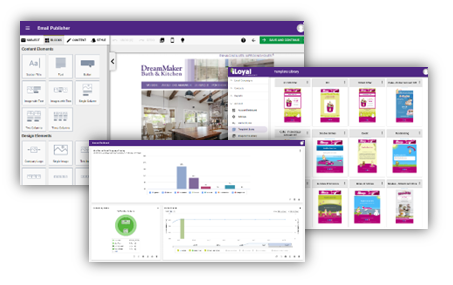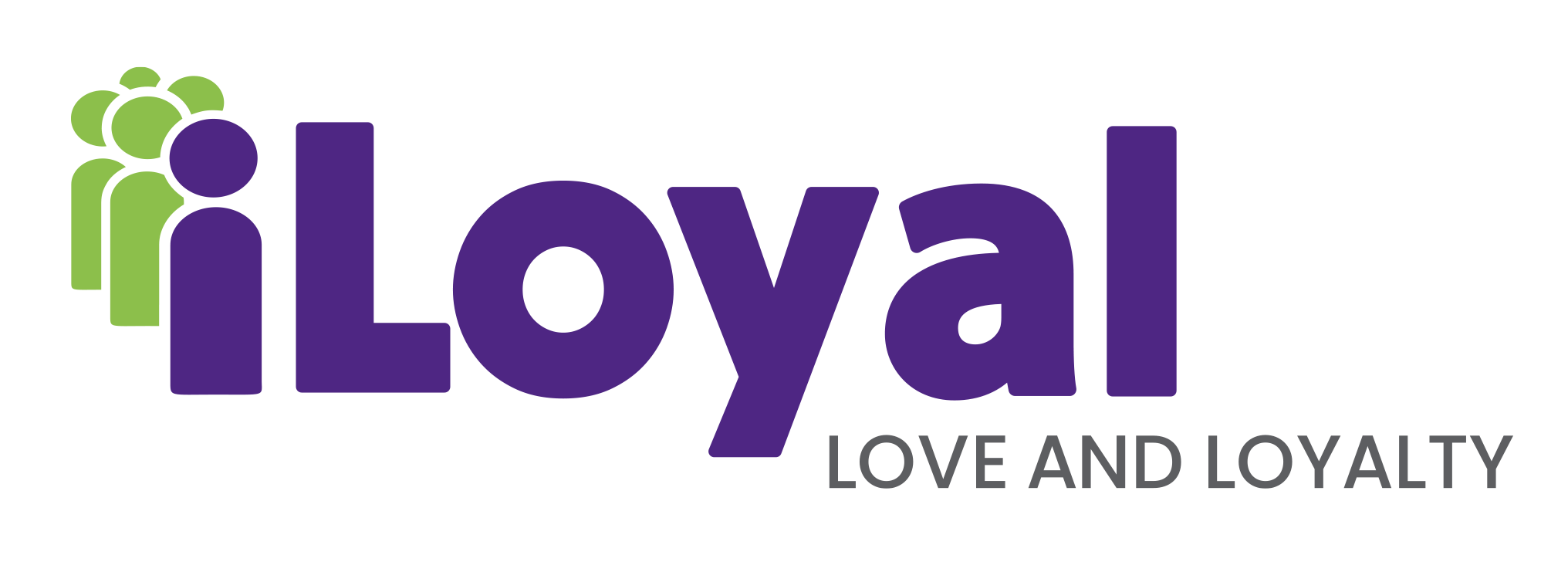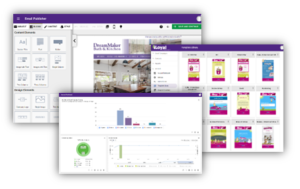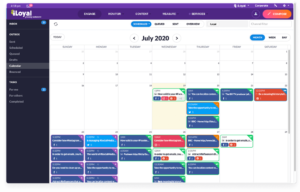LinkedIn
Facebook
Twitter
Reddit
Tumblr
Email
Print

What is an Employee Pulse Survey?

What is an Employee Pulse Survey?
People tend to wait until their exit interview to reveal what they really think and why they’re leaving their company for somewhere new.
Employee dissatisfaction can be chalked up to missed opportunities on the part of supervisors or factors outside anyone’s control. However, if there was a way for organizations to build an automated blind spot detection process, would you be interested?
Some Benefits to Pulse Surveys:
- Improvement in company culture
- Increase in engagement rates and better data
- Minimize or prevent significant culture issues
- Boost in employee trust
- Cost savings
- Measure the impact of changes over time
What is a Pulse Survey?
Pulse surveys give organizations the freedom to measure whatever they think is important to measure on a regular basis. In our experience, the term “pulse” is often used to refer to everything that’s not an annual or bi-annual engagement survey. This can lead to confusion about what this survey type actually is and when to effectively use it as part of an employee listening program.
Pulse surveys are different from engagement surveys, lifecycle surveys (onboarding, exit, candidate reaction, etc.), and ad-hoc employee surveys. In short, a pulse survey is simply a mechanism for measuring feedback that’s not bound to measuring specific topics or content.
This means that the content being measured can (and should) change from organization to organization and even one survey to the next.
Shorter, more frequent check-ins
True pulse surveys meet the following conditions:
- • Tracks the same item over time (for example, “How likely are you to recommend your company as a place to work to people you know?”)
- • Is considerably shorter than an engagement survey and easier to complete
- • Is more frequent than traditional measures surveys (i.e., more than once a year)
- • Happens at a regular time interval (most organizations use them quarterly or monthly)
Pulse surveys are just one of a number of different employee feedback mechanisms you could choose to use outside of an engagement survey. Through our years of experience working with organizations on their survey programs, we’ve come up with a checklist to help companies define whether pulses should be their best-fitting approach.
Get started with iLoyal Email Studio
Plans that flex to your needs and budget. Do it yourself or ask iLoyal for help with templates, graphics, list management, and more.
or call us at
What Are the Advantages of Pulse Surveys?
When employees have the opportunity to provide more frequent feedback, it creates an environment where employees feel valued and heard.
People are 12 times more likely to recommend their employer if they feel like their feedback is being listened to and actioned.
Pulse surveys can be used to measure anything that matters to employees and the business. Some of the most common uses include:
- • Helping maintain an early warning system for important business metrics (e.g. a safety pulse or customer service pulse)
- • Measuring the effectiveness of action plans, particularly those implemented following a traditional engagement survey
- • Helping you to understand the relationships between different types of employee feedback, as well as other important business outcomes that are tracked frequently, such as voice of the customer (VoC), performance, and turnover.
Why Use Pulse Surveys?
The short answer is anything! Pulse surveys are a feedback method that is not content-specific. What you ask should be tailored to your organization’s priorities, goals, and what you need to track.
In fact, the only content-related mandate for a pulse is to have some consistency, so you’re able to track the same item over a period of time and see how it changes from one month or quarter to the next.
With that said, we do see synergies in the types of content organizations choose to measure with their employee pulse surveys.
Here are a couple of the more common uses:
- • Engagement Pulse (completely replacing the annual engagement survey): a pulse survey that includes a shorter (maybe only 2-3 items) measure of employee engagement, along with measures of the core drivers of engagement (autonomy, career progression, alignment to strategy)
- • Action Planning Follow-Up Pulse (run in conjunction with the annual Engagement survey): A pulse to monitor the action plans set after your annual engagement survey with structured, regular feedback to help you measure progress and make changes to your plans, should you need to.
In addition to the above, some organizations choose to track whether their company values are truly being “lived” in the organization (sometimes forming part of a broader culture initiative), or check in on employee sentiment more regularly through an organizational change program.
Once a need for pulse surveys has been identified, they can be a valuable tool to bring the voice of employees into business decisions more regularly which will enhance the overall employee experience.
What Questions Should Be Included in a Pulse Survey?
When it comes to running a pulse survey there are no “must-measure” questions or ‘items,’ as a pulse survey should be a strategic addition to your overall employee listening strategy.
Any pulse survey program will represent an investment of time from your employees and your resources, so you should focus on measuring only things that are relevant, and important to your organization.
Start with the organization’s strategic priorities, then consider the HR department’s goals. One of the biggest mistakes organizations make is failing to include either outcomes or drivers in the survey.
For example, only measuring engagement will tell you nothing about “why” employees are engaged or disengaged, thereby making the survey “unactionable.”
When thinking about the structure of your survey, we recommend using the 70:20:10 rule of thumb:
- • 70% driver or “actionable” items
- • 20% outcome questions/items
- • 10% open-text questions/items
From there, consider the following common and useful measurements:
Engagement
The vast majority of employee pulse surveys run using our solutions include some measure of engagement. This can include multiple engagement questions (e.g. “I am proud to work for this company”) or a single item such as eNPS.
Action Planning Themes
Many organizations use pulse to gauge the effectiveness of action plans that arise from the traditional engagement survey.
For example, you may want to understand the extent to which employees agree with the statement, “I have seen positive changes taking place as a result of previous surveys.”
The specific survey content will change from organization to organization but can essentially duplicate the themes from the engagement survey that triggered an action plan.
Strategic Initiatives
Oftentimes organizations launch strategic initiatives or product enhancements that would benefit from employee feedback. The specific content of these surveys should be customized to the organization and the specific initiatives being launched.
For example, the organization may be undergoing changes such as restructuring and it may be an opportune time to receive feedback on how employees are perceiving those changes (e.g., “This company does a good job of helping me understand how changes will affect my work”).
We suggest measuring low scoring or surprising survey items, employee reactions to new programs or initiatives, or measurements that matter to executives.
Share or save this article.
LinkedIn
Facebook
Twitter
Reddit
Tumblr
Email
Print
How Long Should a Pulse Survey Be?
Rule of Thumb: The more frequent the pulse survey is administered, the shorter it should be.
For example:
- • Monthly pulse: 10-15 questions
- • Quarterly pulse: 15-20 questions
- • Bi-annual pulse: 20-30 questions
How Often Should Pulse Surveys Be Used?
While many organizations ask, “how often will employees have to take the pulse survey?”, the real question should be “how frequently does the business need to see results from the survey, and how quickly can the business respond to the results?”
Take into account these 4 factors:
1. How frequently the constructs you are measuring are likely to fluctuate
For example, if your goal is to measure employee mood (not our first recommendation to clients new to pulse), then it’s reasonable to expect employees’ moods to fluctuate very frequently.
This could be daily and perhaps even more than once per day. However, if you’re measuring employee engagement, and the drivers of engagement, then daily or weekly measurement does not make sense.
Engagement levels are not likely to fluctuate in such a short period of time.
2. How often can the business absorb and communicate results
When you administer a survey to your employees, it sets an expectation that leaders will use the results to take action. Surveying employees and then failing to communicate back or act on the results can backfire and create feelings of distrust and disengagement among employees.
It’s also a surefire way to decrease future survey response rates.
This doesn’t mean you must always take immediate action after every survey you administer, but it does mean you should be prepared to review each set of results and aim to understand them.
When considering the right cadence of your pulse survey, think about how often the organization can react to survey results. This should, at a minimum, mean there’s some communication of results back to the employees who participated in the survey and some sort of reaction or action plan(s).
3. How long it takes for action plans to be implemented
As mentioned, action does not necessarily follow from every pulse survey.
For example, a pulse check on the effectiveness of action plans implemented earlier may show that additional action is not needed.
However, you should always “plan” for possible actions following each pulse survey. Not only does the business need time to review, communicate and decide on actions, but the time needed to implement action plans may also need to be considered.
4. How often are other organizational metrics reported?
Every organization has its natural cadence – some work quarter-to-quarter, some month-to-month and for others everything revolves around the annual meeting.
So, in your pulse planning ask what the business needs the data for. If you’re simply reporting data to the board at the annual meeting, pulse might not be the right mechanism and you could run an annual engagement survey instead.
If you’re reporting monthly, however, you might want to match that cadence so you can provide fresh data each time and update the board on the improvements.
We find that quarterly is a popular pulse cadence for organizations, for the following reasons:
- • Most organizations run their reporting on a quarterly cycle already
- • It leaves time for them to review the data and put actions in place
- • It allows their surveys to be slightly longer, giving them a bit more survey ‘real-estate’ so allowing for more topics to be included
Share or save this article.
LinkedIn
Facebook
Twitter
Reddit
Tumblr
Email
Print
Popular Posts
- July Holidays & Occasions to Integrate into Your Marketing
 by iLoyal
by iLoyal - June Holidays & Occasions to Integrate into Your Marketing
 by iLoyal
by iLoyal - May Holidays & Occasions to Integrate into Your Marketing
 by iLoyal
by iLoyal - March Holidays & Occasions to Integrate into Your Marketing
 by iLoyal
by iLoyal - February Holidays & Occasions to Integrate into Your Marketing
 by iLoyal
by iLoyal
Get the email marketing app with in-house access to design and data support.
Streamline the way you manage social media. No upgrades required to get all the features.
Build your business around Customer & Employee Experience
Easy ways to get started with iLoyal
- Start a Free App Trial
- Book a Discovery Call
- Use the Plan Builder

Just want the apps?
Sign up for a free trial by clicking the link for your choice of apps below. Upgrade to a paid plan when you are ready to start sending.
Email Studio: Free until contacts are added
Social Genius: Unlimited 14-day Trial
iLoyal SMS: Free until number is provisioned

Let's Chat!
Tell us what you want to accomplish with your marketing and we’ll connect you with the apps and team that fit you like a glove – even if it’s not iLoyal! Stop spending time searching and let experts guide you toward a marketing tech solution and great service experience.
Call during business hours @ 888-352-9889


Customize Your Service Plan
Choose marketing app licenses and service levels to customize a plan from nearly everything iLoyal offers – from email design support and content development to social posting and website design.
Questions? Contact us for a free consultation with our team of experts.
Call iLoyal at 888-352-9889 for a custom quote.
iLoyal Email Studio
Grow sales and create loyalty with an email marketing app packed with features and with access to experts in design and data.
We create love and loyalty.
Attract customers. Understand the market. Ace the customer experience. Drive sales.
We deliver the powerful technology you need to build customer relationships and stay top of mind with your audience. From branding and website design, from content ideation to campaign deployment, our caring experts are here to support you every step of the way.
Engage to Succeed
Get marketing ideas, keep up with best practices, be the first to know about tech updates, and more.

© iLoyal, Inc. 1999-2023. All rights reserved. | Privacy Center | Terms & Conditions





